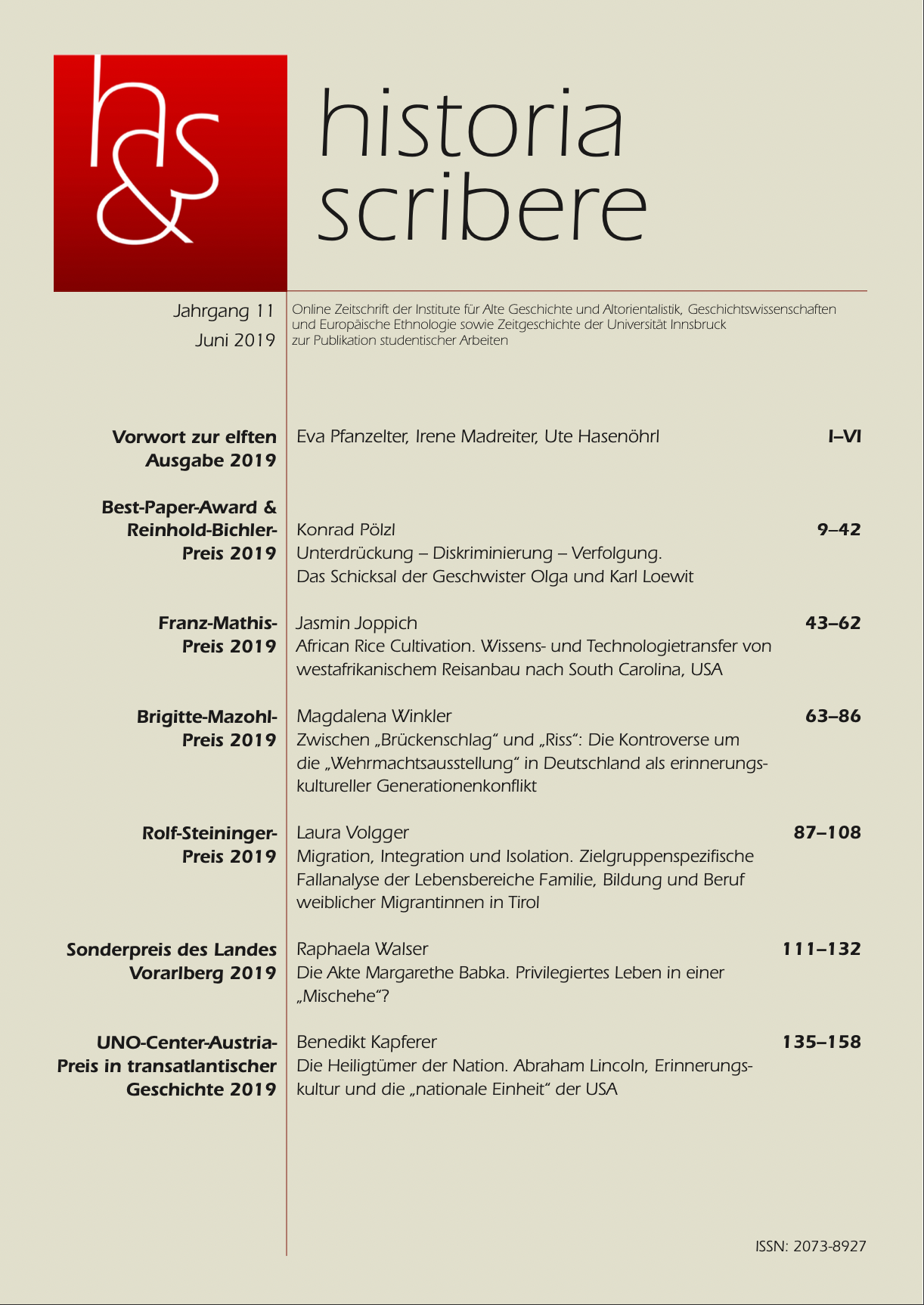Die Seidenstraße. Konnektivität als Motor von „Grobalization“ und „Glocalization“ am Beispiel des chinesischen Buddhismus
DOI:
https://doi.org/10.15203/historia.scribere.11.802Schlagwörter:
SE-Arbeit,Abstract
The following paper deals with the connectivity of the Silk Roads and how these networks function as a driving force of globalizing phenomena, especially of Grobalization and Glocalization, demonstrated by the example of Chinese Buddhism. It will examine the advent of Buddhism and its spread via the Silk Roads, the Chinese response to this new religion, the pilgrim journeys of Chinese monks to India, and the case study of Dunhuang. As will be shown, the networks of the Silk Roads formed a stable basis for the spread of Buddhism to China, amongst other things due to their continuity and the support of official and private institutions.
Downloads
Veröffentlicht
17.06.2019
Ausgabe
Rubrik
Thomas-Albrich-Preis 2019 (Runner-Up-Award von historia.scribere 11)
Lizenz
Die Einreicher_innen erklären sich mit Einreichen der Beiträge mit den Copyright-Bedingungen von historia.scribere, d. h. mit der Online-Publikation ihrer Arbeiten, einverstanden.Diese Beiträge werden im sog. Gold Open Access publiziert und sind unter der Creative Commons-Lizenz (CC BY-NC-SA 3.0 AT) lizenziert.


